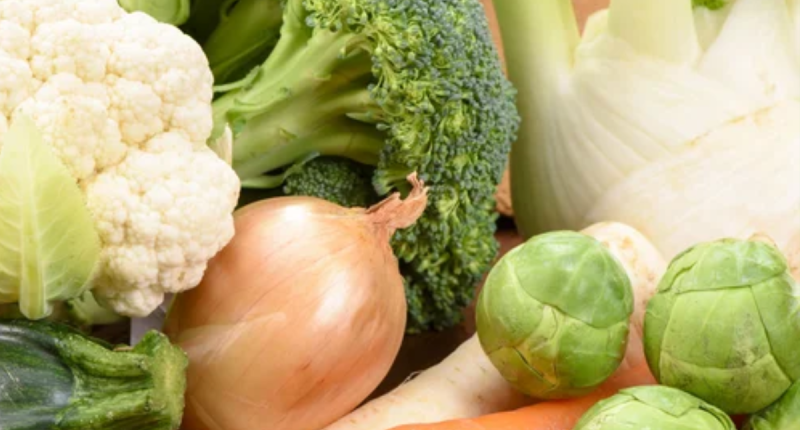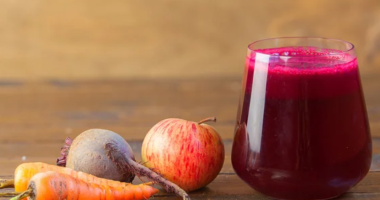12 amazing health benefits of cruciferous vegetables – Cruciferous vegetables are a diverse group of vegetables belonging to the Brassica family. This includes popular choices like broccoli, cauliflower, Brussels sprouts, kale, and cabbage, just to name a few. But beyond their delicious taste and versatility, these vegetables pack a powerful punch when it comes to health benefits.
Here are 10 amazing reasons why you should include cruciferous vegetables in your diet:
1. Cancer Prevention
Cruciferous vegetables are rich in glucosinolates, which are naturally occurring compounds that break down into isothiocyanates when chewed or chopped. These isothiocyanates have been shown to have anti-cancer properties, helping to protect against various types of cancer, including breast, colon, lung, and prostate cancer.
2. Reduces Inflammation
Inflammation is a major risk factor for many chronic diseases. Cruciferous vegetables contain antioxidants and anti-inflammatory compounds like sulforaphane, which can help reduce inflammation throughout the body. This can potentially lower the risk of diseases like heart disease, arthritis, and Alzheimer’s disease.
3. Detoxification
Our bodies are constantly exposed to toxins from various sources. Cruciferous vegetables are rich in glutathione, a powerful antioxidant that helps support the body’s natural detoxification processes. These vegetables can also help to eliminate harmful toxins and waste products, contributing to improved overall health.
4. Improves Heart Health
Cruciferous vegetables are a good source of fiber, vitamins, and minerals that are essential for maintaining heart health. They can help lower LDL (bad) cholesterol levels while raising HDL (good) cholesterol levels, reducing the risk of heart attack and stroke.
5. Boosts Gut Health
Gut health is crucial for overall well-being. Cruciferous vegetables are a rich source of dietary fiber, which acts as a prebiotic, feeding the beneficial bacteria in your gut. This promotes a healthy gut microbiome, which can improve digestive health, prevent constipation, and even strengthen your immune system.
6. Supports Brain Health
Certain compounds in cruciferous vegetables, such as sulforaphane, have been shown to have neuroprotective effects. These compounds can help protect brain cells from damage and may even improve cognitive function and memory, potentially reducing the risk of neurodegenerative diseases like Alzheimer’s and dementia.
7. Weight Management
Cruciferous vegetables are low in calories and high in fiber, making them a perfect food for weight management. Their high fiber content helps you feel fuller for longer, reducing overall calorie intake and promoting weight loss.
8. Rich in Essential Nutrients
Cruciferous vegetables are packed with essential nutrients that are vital for maintaining good health. These include vitamins C, K, A, and E, as well as folate, iron, calcium, and potassium. These nutrients play key roles in various bodily functions and can help prevent various health problems.
9. Bone Builders
Ensuring strong and resilient bones is not limited to dairy products alone. Cruciferous vegetables, armed with a rich reserve of calcium, vitamin K, and magnesium, contribute to bone health. These nutrients, working synergistically, fortify bones and reduce the risk of osteoporosis.
10. Digestive Dynamo
Promoting gut health is an often underestimated quality of cruciferous vegetables. The fiber content aids digestion, preventing constipation and promoting a healthy gut microbiome. Additionally, the sulforaphane compounds may help protect the stomach lining, reducing the risk of gastric ulcers.
11. Delicious and Versatile
Cruciferous vegetables come in a variety of flavors and textures, making them a versatile addition to your diet. They can be enjoyed raw, cooked, roasted, steamed, or even blended into smoothies or soups. This makes it easy to incorporate them into your favorite dishes and find ways to enjoy them even if you’re not a fan of eating them plain.
12. Affordable and Easy to Find:
Cruciferous vegetables are readily available at most grocery stores and are typically very affordable. This makes it easy and accessible to include them in your diet on a regular basis, regardless of your budget.
So, by incorporating more cruciferous vegetables into your daily meals, you can unlock a treasure trove of health benefits and contribute to a healthier and happier you!
Don’t Miss: Health benefits of ata rodo pepper (scotch bonnet pepper)
How to unlock the full potential of cruciferous vegetables:
While simply adding cruciferous vegetables to your diet is beneficial, there are ways to maximize their health benefits:
1. Choose variety: Don’t limit yourself to just one or two types. Explore the diverse range of cruciferous vegetables available, each offering unique flavor and nutrient profiles.
2. Eat them raw or lightly cooked: Cruciferous vegetables contain enzymes that break down glucosinolates into isothiocyanates. Cooking can deactivate these enzymes, reducing the formation of these beneficial compounds. Aim to consume them raw or lightly steamed, roasted, or stir-fried to maximize their nutritional value.
3. Chop and chew: Chewing stimulates the enzymes responsible for converting glucosinolates to isothiocyanates. Chopping or crushing cruciferous vegetables before eating increases their surface area, further enhancing this process.
4. Combine with other healthy foods: Pair cruciferous vegetables with other nutrient-rich foods like turmeric, garlic, or black pepper. These ingredients can enhance the absorption and bioavailability of beneficial compounds in cruciferous vegetables.
5. Ferment them: Fermentation increases the bioavailability of nutrients and creates beneficial probiotics, further enhancing gut health. Consider making your own fermented sauerkraut or kimchi for an extra boost.
6. Be mindful of cooking temperature: While lightly cooking is preferred, avoid overcooking cruciferous vegetables as it can significantly decrease their vitamin C content.
7. Experiment with flavor combinations: Don’t be afraid to get creative in the kitchen! Explore different spices, herbs, and sauces to find ways to make these vegetables even more delicious and enjoyable.
8. Start small and gradually increase intake: If you’re new to cruciferous vegetables, start by incorporating them into your diet slowly. This will help your digestive system adjust and avoid any potential bloating or discomfort.
9. Make them a part of your daily routine: Aim to include cruciferous vegetables in at least two meals or snacks per day. This will ensure you’re consistently reaping the benefits they offer.
By incorporating these simple tips, you can unlock the full potential of cruciferous vegetables and experience their numerous health benefits. Remember, consistency is key! So, make these nutritious powerhouses a regular staple in your diet for a healthier and happier you.
Additional Resources:
- https://www.webmd.com/diet/health-benefits-cruciferous-vegetables
- https://pubmed.ncbi.nlm.nih.gov/23175779/
Note: This article is written based on scientific evidence found by the soundhealthandlastingwealth.com team. Sources are duly referenced and hyperlinked to source websites and are clickable for confirmation.










